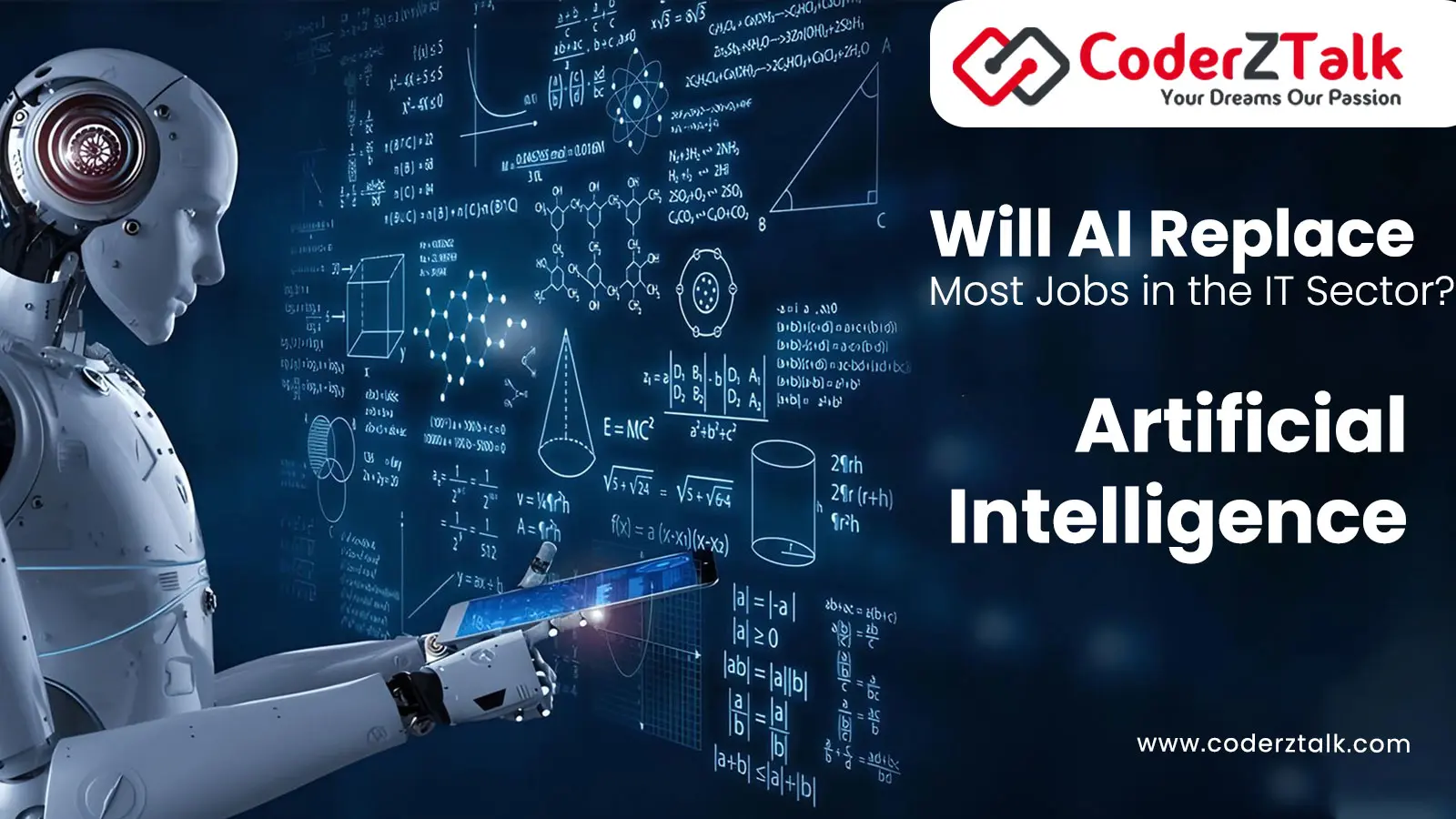The rise of Artificial Intelligence (AI) has transformed various industries, leading many to question: What jobs will most of them be replaced by AI in the IT Industry? This inquiry is quite useful in the areas of web marketing services, search engine optimization (SEO) services, web design services, web development services, computer graphics or graphic design services. As good as it is, the application of AI results to some pros and cons for the IT professionals. They will address the relation between these roles and the future of the IT workforce in the context of AI this blog will cover.

To give an overall view of the use of Artificial Intelligence in Information Technology, this paper presents the following background of the topic:
AI is slowly and gradually being embedded into the logistical facets of operations in information technology. Starting from avoiding the need to perform time-consuming manual tasks, to analyzing large datasets, AI technologies improve effectiveness. Nevertheless, it is still doubtful whether these changes will result in job loss or a change of job profiles.
Digital Marketing: An Evolving Field
In digital marketing, AI mechanisms have become valuable trying strategies for communicating with consumers. Google Ads server and Facebook Ads server use AI to study the behavior of users and the optimal placement and marketing for different campaigns. This makes it easier for marketers with special focusing on the target markets.
Yet although Artificial Intelligence can help in analyzing the data and targeting the ads it would not be able to replace creativity or emotive skills in the sphere of marketing. It is human marketers who are responsible for telling good stories and are also involved in the branding processes. Thus, with reference to digital marketing, instead of creating joblessness, AI is redesigning the jobs by making the people to spend their time mostly on strategy and creativity.
SEO: The Need for Human Insight
Other related area of computing where AI is beginning to make a huge impact is in Search Engine Optimization (SEO). Automation can help find trends and predict that an algorithm is going to change, what keywords are good enough to put in a content. Moz for example and SEMrush are other tools that employ AI while offering recommendations that improve the performance of SEO.
However despite these technological trends in SEO, there is no room for dispensing with skilled human input. Writing good content, analyzing the user intent, and using the patterns of search engines all involve knowledge of human psychology. Frankly speaking, SEO experts will have to incorporate AI tools to their work in order to make them more productive and useful.
Web Development: Automation and Innovation
AI applications in web development include code generation, debugging and testing where an AI tool can do all of them. Tools like GitHub Copilot are pre-written codes to offer suggestions to the developers and enhances efficiency among the developers. This automation can potentially halve development time for simple tasks and give development teams more opportunity to solve harder ones.
But of course, web development is not only limited to coding. There are elements of UX design, problem-solving, and even the need-to-know about the users. AI makes life easier by automating repetitive tasks that would otherwise consume developers’ time, making the latter engage in tasks that require critical thinking and cooperation with the design and marketing departments.
Web Designing: Creativity in the Age of AI
Web designing is still a very creative job and one employs all his/her instincts when designing a website. As the process of creating attractive and informative designs and patterns, which can contribute to the development of actually valuable users’ experiences, is unbreakably bound up with the essence of the human’s approach, AI can only help in saving time when it comes to creating prototypes of certain design patterns to be utilized in the project.
Although there is software that can look at interactions and provide tips for improvement – those insights, and the artistic focus as well as emotional input that a designer brings – can never be replaced. One conclusion is that designers should not see AI as their enemy but as a co-worker in creating an AI-enhanced design.
Graphic Designing: This paper aims to examine the balance of art between art and automation
In graphic design, AI has slowly been adopted to perform tasks that include image equalization, or the creation of multiple designs in one single job. Applications such as Adobe Sensei applies the use of AI in a work process so that designers spend less time on work-related problems.
But, the great and profound part of graphic design—its narrative, inspiration, and appeal to the audience’s emotions, all remain unbolted. Although AI has capabilities in some of the areas we have discussed, it lacks the level of analysis that a good designer can add to a project. What is the future of Graphic design, it is obvious that artificial intelligence will become an integrated tool that supports creativity.
The Future Of IT Jobs
It is a transformation rather than a replacement of capital intelligence in other industries, and similarly, in the education sector.
The story that AI will eliminate almost all employment opportunities in the IT industry is flawed. We are more likely to witness new changes with respect to roles and responsibilities of professionals in digital marketing, SEO, Web development, Graphic and Website designing.
Emphasizing Lifelong Learning
They observe that the issue of lifelong learning becomes more significant when using new AI technologies. Those in IT must be ready to learn and change as new tools and methods are introduced to them. This will entail achieving mastery on AI technologies, machine learning and data analysis that will help the candidate to market themselves in the job market.
This paper focuses on the synergism between people and Artificial Intelligence.
Thus, the relation between human and computer science will be symbiotic in the future of work for IT industry. One cannot fail to notice that AI remains the solution that can improve the professional skills of the user. When work-related processes are repetitive, people are able to devote their time and efforts to creative endeavours, critical thinking and decision making.
Conclusion
In conclusion the major point is to accept changes provided by AI. Incorporation of AI into work place makes career technologists increase value of their work, foster innovation and continually improve on their competitiveness. The IT sector must involve human imagination and AI to make the most of them by creating a healthy working environment for both.
At Coderztalk, we believe that embracing AI is not just a trend—it’s a transformative opportunity. By integrating human creativity with advanced technology, we empower technologists to enhance their value, drive innovation, and thrive in a competitive landscape. As we navigate this new era, those who adapt and collaborate with AI will lead the charge in shaping the future of the IT sector.
Indeed, as we enter this phase of artificial intelligence integration, the learners who are able to seize instructional initiative, and the organizational members who are willing and able to shift roles will emerge as the leaders of the pack. Human and machine relationship will therefore determine the sort of engagement we will see in future concerning jobs in the IT field.
